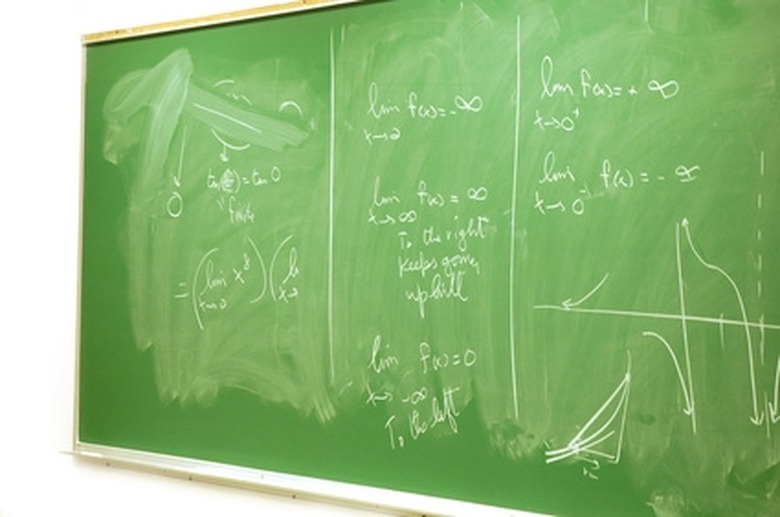How To Graph A Parabola
A parabola is a mathematical concept with a u-shaped conic section that is symmetrical at a vertex point. It also crosses one point on each of the x and y axes. A parabola is represented by the formula y – k = a (x – h)^2.
Step 1
Write your equation on paper. Rearrange the equation into the form of a parabola if necessary. Remember the equation: y – k = a (x – h)^2. Our example is y – 3 = – 1/6 (x + 6)^2, where ^ denotes an exponent.
Step 2
Find the vertex of the parabola. The vertex is the exact center of the parabola, the key component. Using the formula for a parabola, y – k = a (x – h)^2, the vertex x-coordinate (horizontal) is "h" and the y-coordinate (vertical) is "k." Find these two values in your actual equation. Our example is h = – 6 and k = 3.
Step 3
Find the y-intercept by solving the equation for "y." Set "x" to "0" and solve for "y." Our example is y = -3.
Step 4
Find the x-intercept by solving the equation for "x." Set "y" to "0" and solve for "x." When taking the square root of both sides, the single number side of the equation becomes both positive and negative (+/-), resulting in two separate solutions, one using the positive and one using the negative.
Step 5
Draw a blank line graph on graph paper. Determine the size and area of the graph. A parabola goes to infinity, so the graph is only a small portion near the vertex, which is the top or bottom of the parabola. The graph needs to be drawn in proximity to the vertex. The x- and y-intercepts tell the actual points that appear on the graph. Draw a straight horizontal line and a straight vertical line intercepting and passing through the horizontal line. Draw an arrow at both ends of both lines to represent infinity. Mark small tick lines on each line at equal intervals representing numeral increments in the vicinity of the size of the coordinates. Make the graph a few ticks larger than these coordinates.
Step 6
Plot the parabola on the line graph. Plot the vertex, x-intercept and y-intercepts points on the graph with large dots. Connect the dots with one continuous u-shaped line and continue the lines to near the end of the graph. Draw an arrow at both ends of the parabola line to represent infinity.
Things Needed
- Graphing paper
- Pencil
Warning
Double-check your calculations even if you are using a calculator.
Cite This Article
MLA
Gugie, John. "How To Graph A Parabola" sciencing.com, https://www.sciencing.com/graph-parabola-4546044/. 24 April 2017.
APA
Gugie, John. (2017, April 24). How To Graph A Parabola. sciencing.com. Retrieved from https://www.sciencing.com/graph-parabola-4546044/
Chicago
Gugie, John. How To Graph A Parabola last modified August 30, 2022. https://www.sciencing.com/graph-parabola-4546044/
